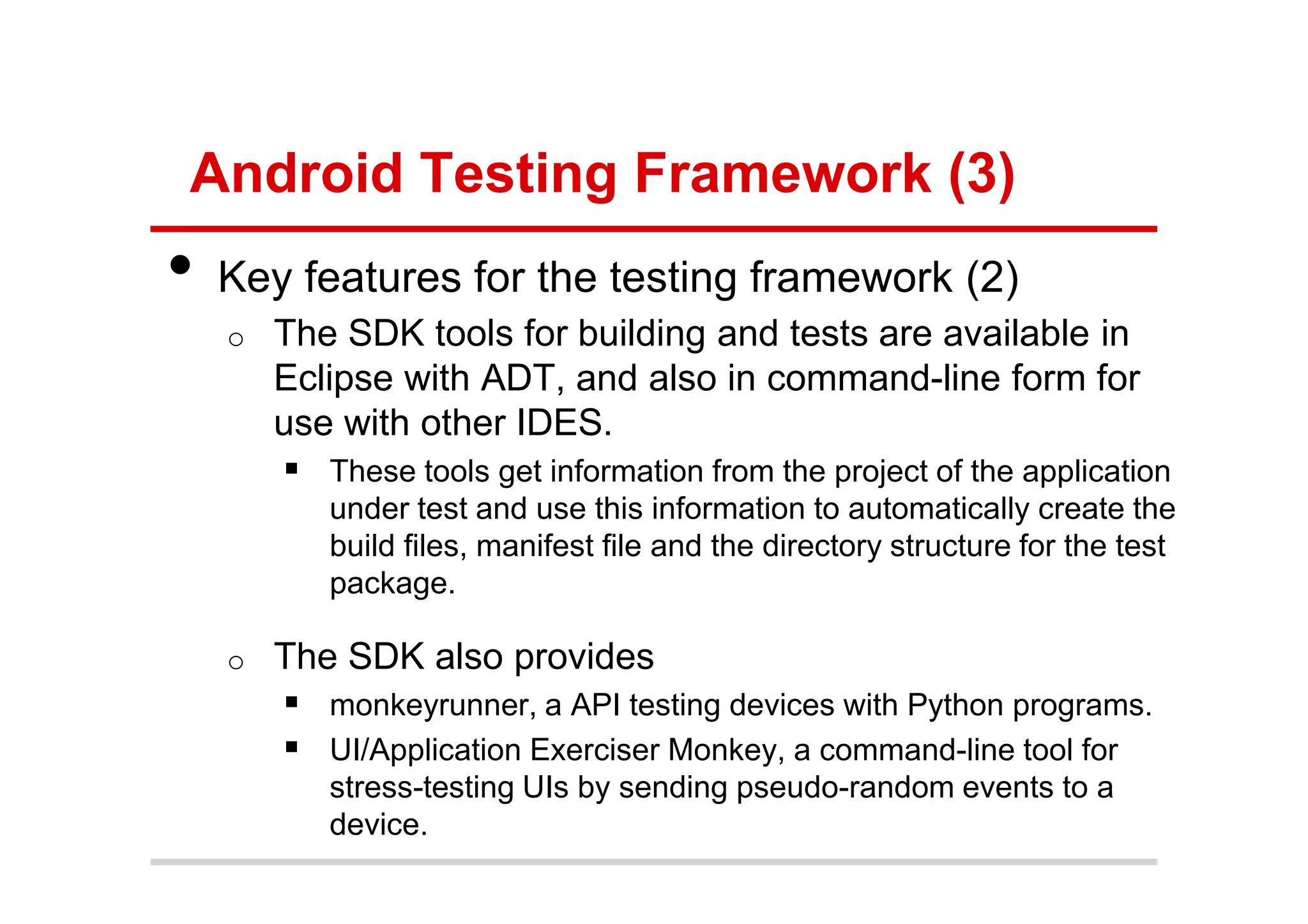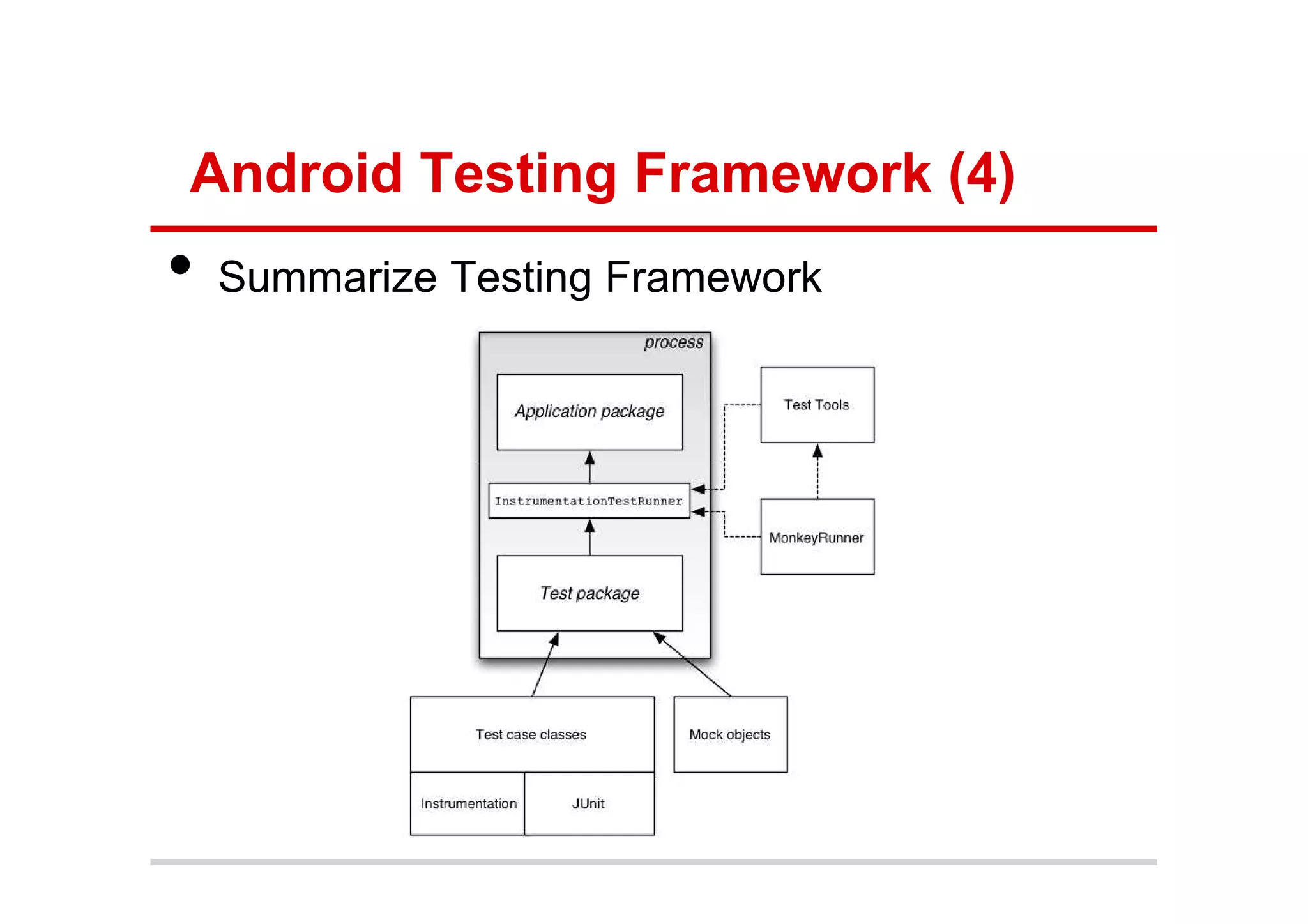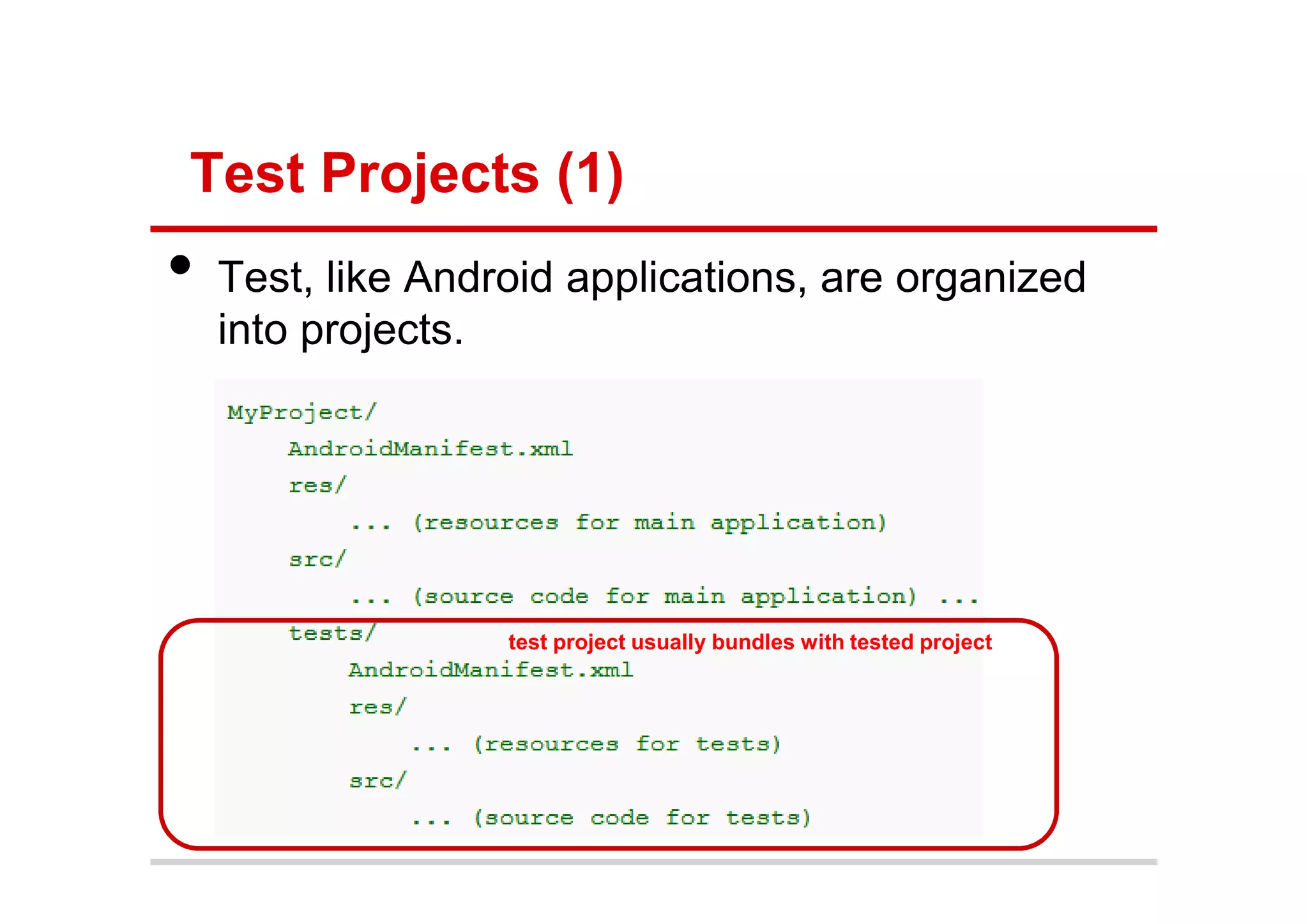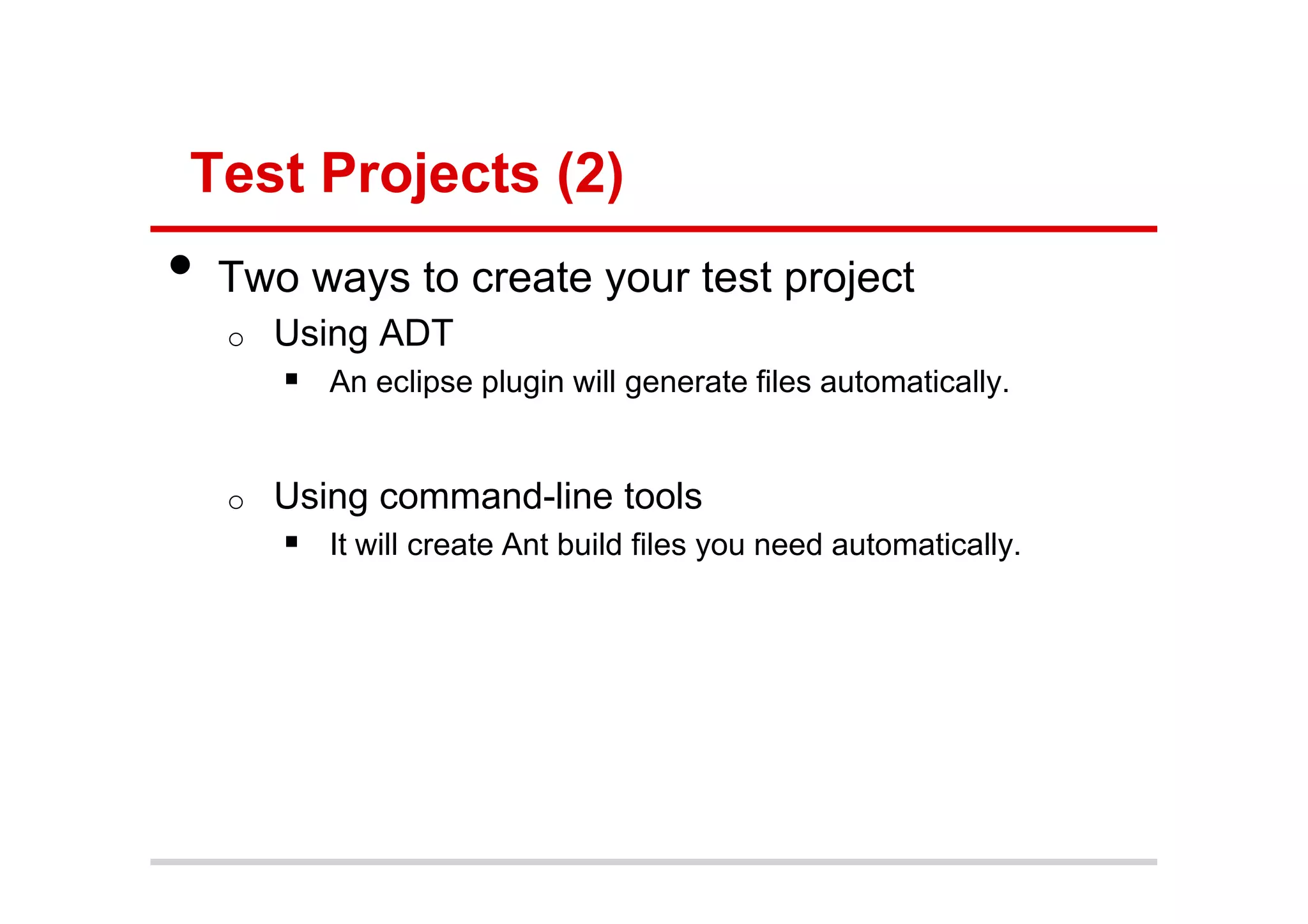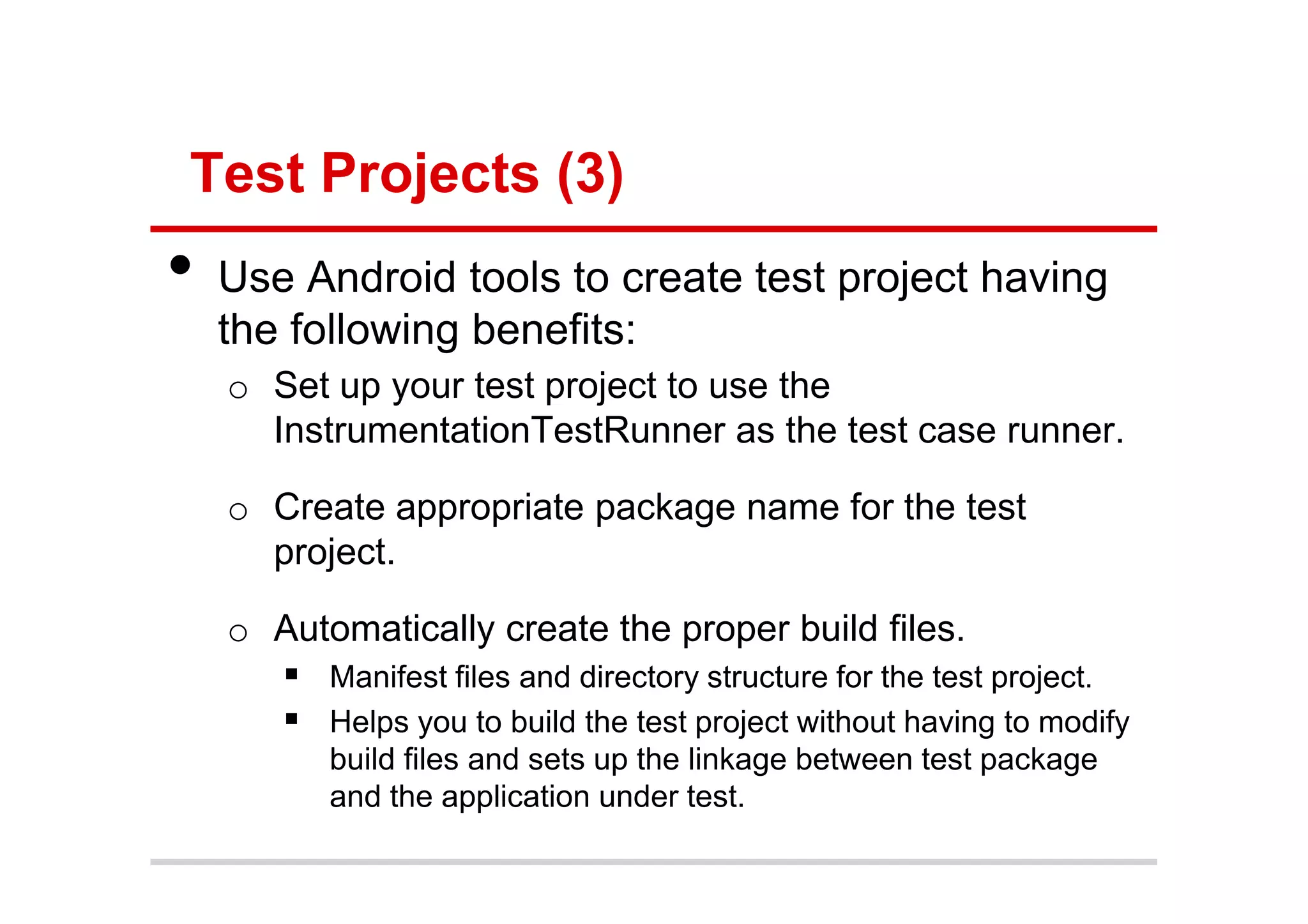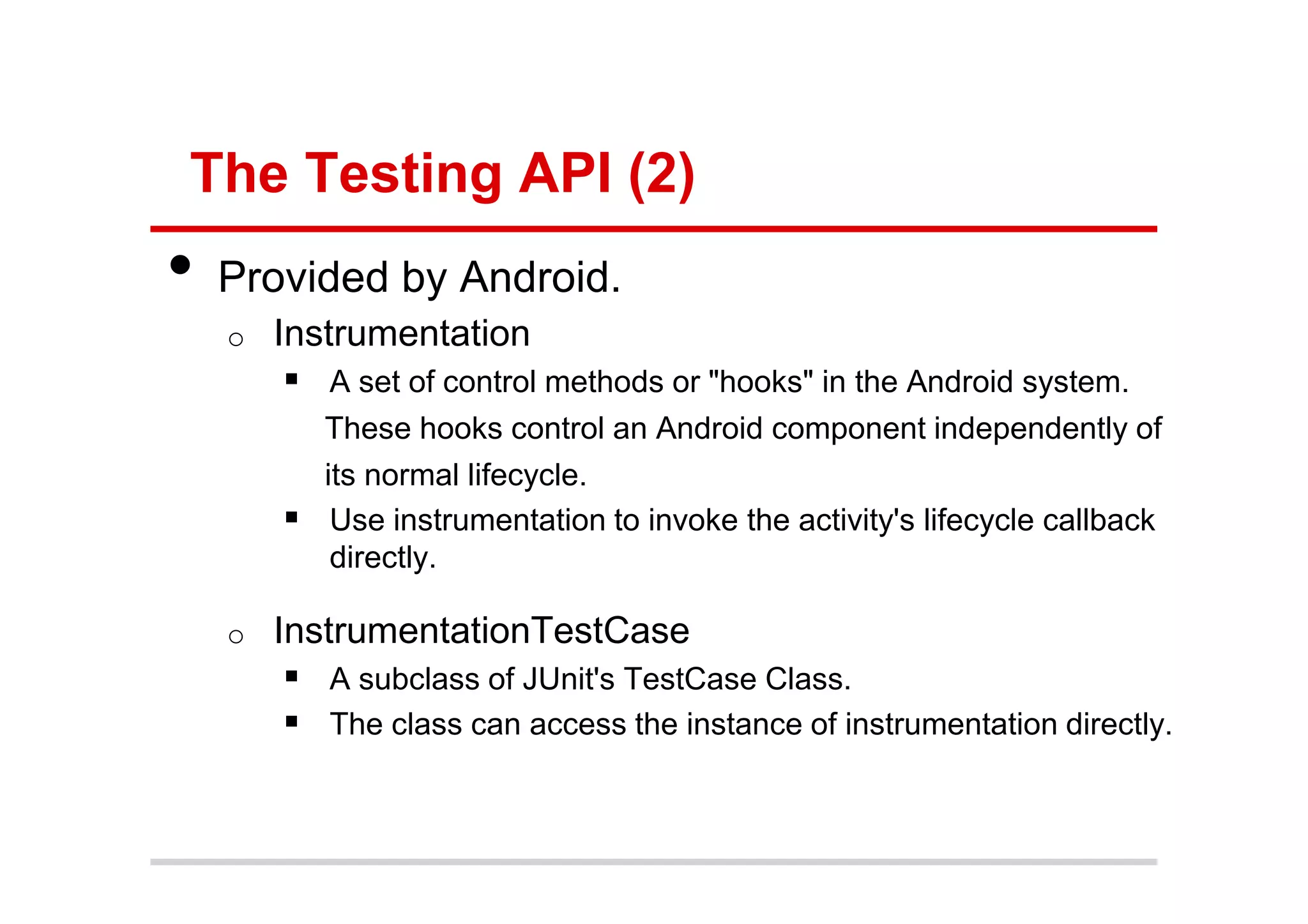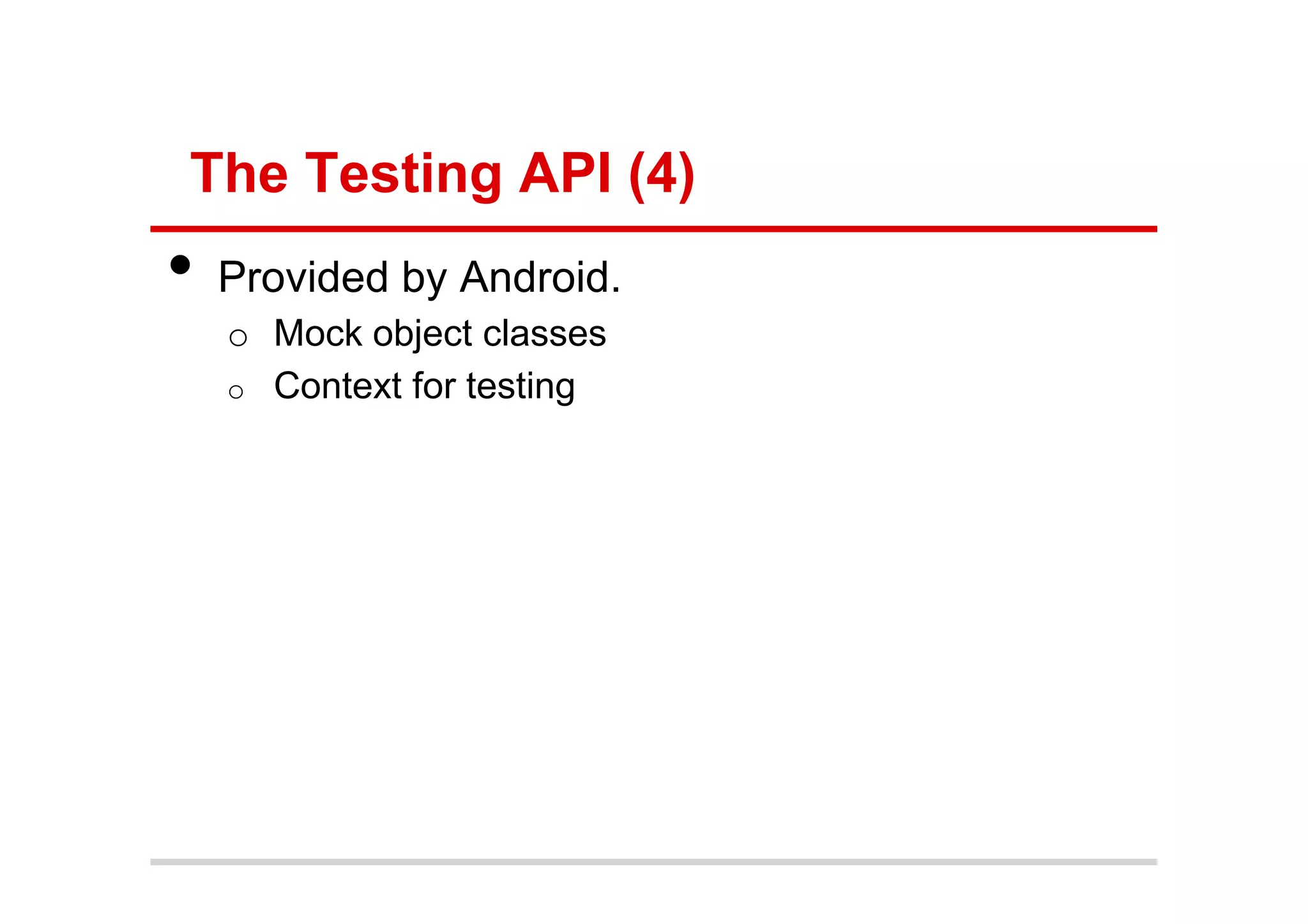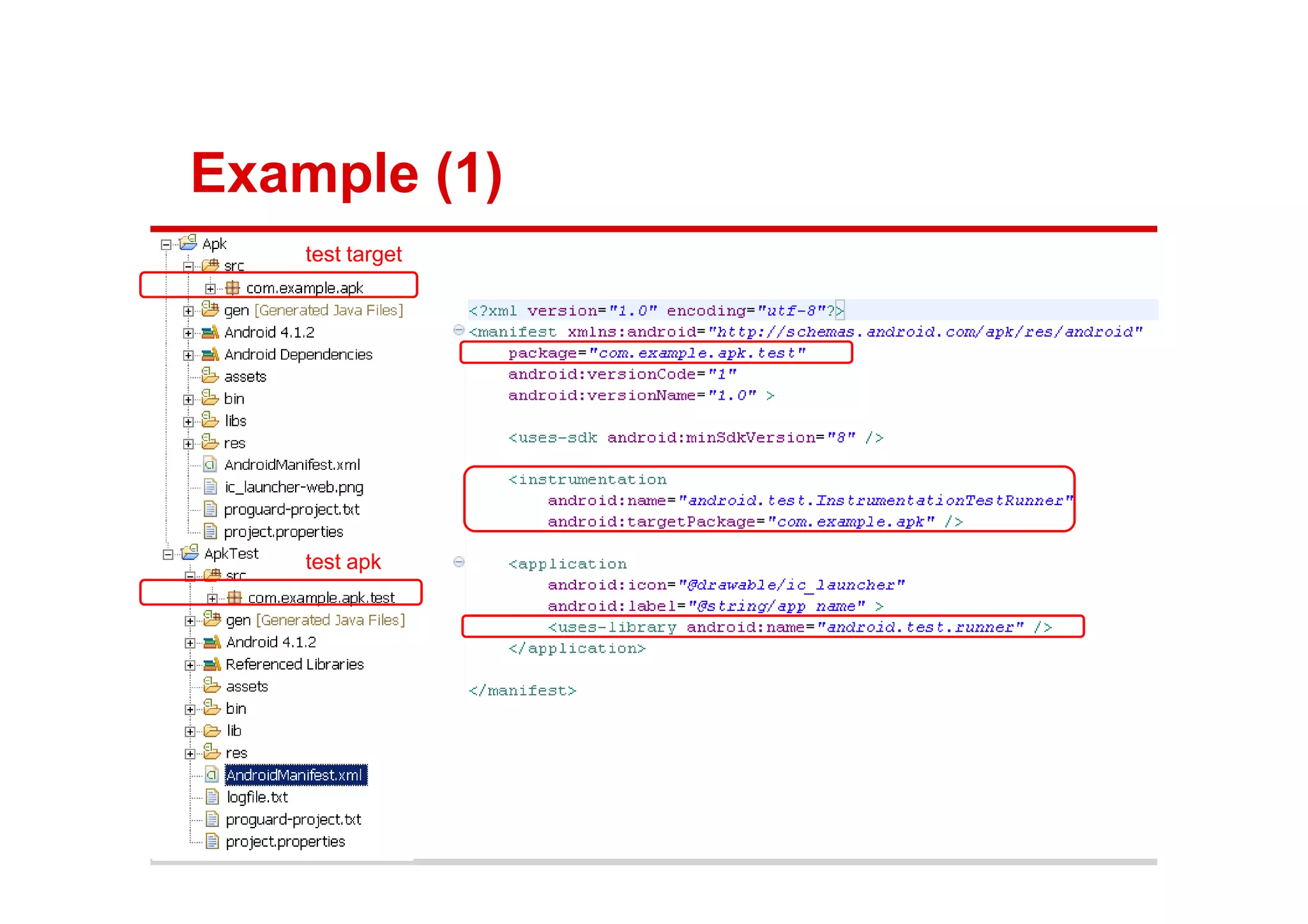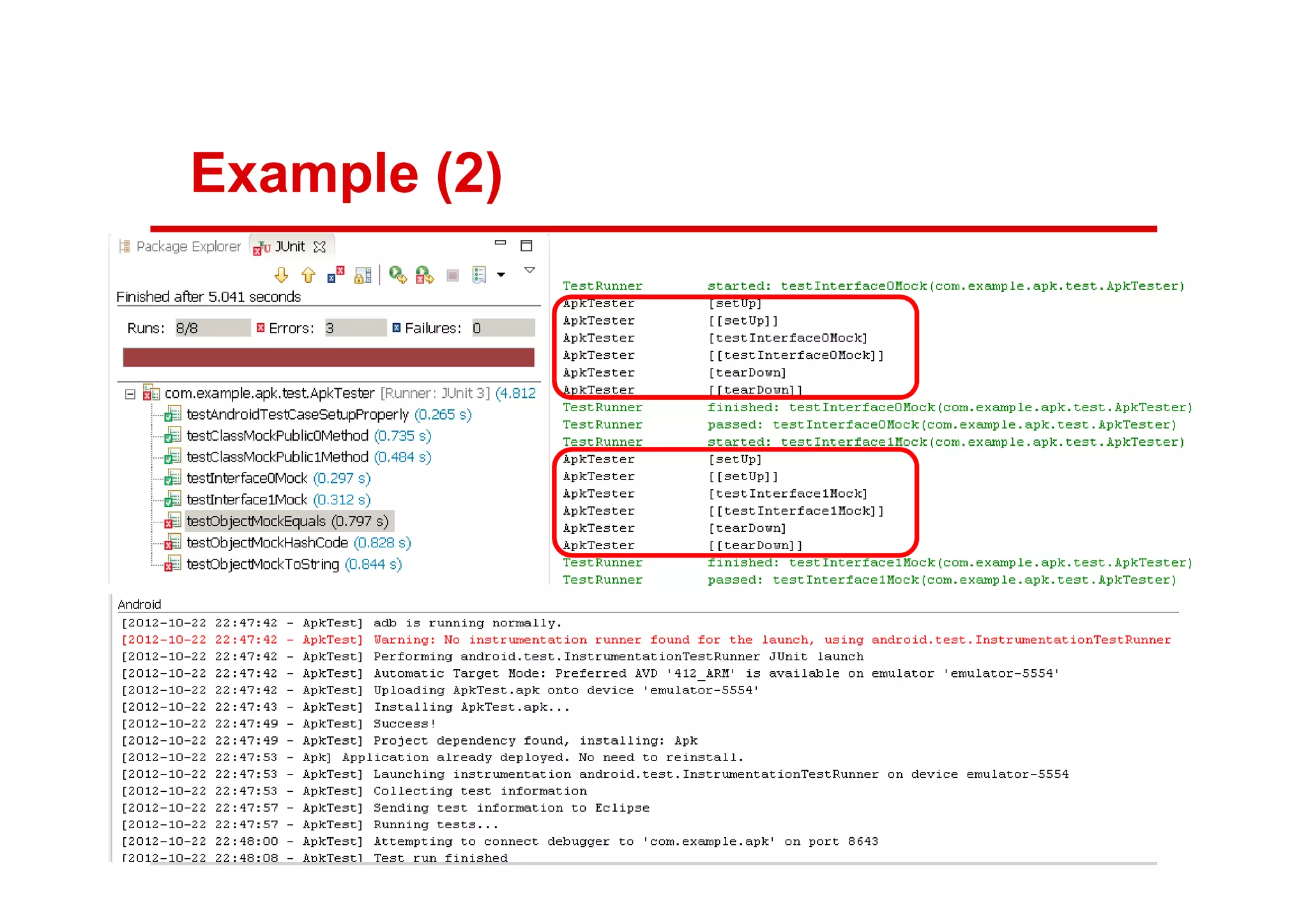The document discusses unit testing in Android. It provides an overview of the Android testing framework, which is based on JUnit and provides component-specific test classes and helpers. It describes how to set up test projects that are bundled with the project being tested and how the Android tools can automatically generate required files. It also outlines the key testing APIs provided by JUnit and Android for different types of tests, such as InstrumentationTestCase for instrumented tests and AndroidTestCase for tests involving Android APIs. Component-specific test cases are described for activities, services, and content providers.




